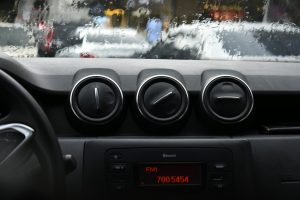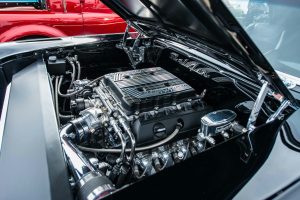What Are Lane Assist and Adaptive Cruise Control?
As technology continues to advance, it’s no surprise that these advancements have also made their way into the automotive industry. One of the latest innovations in the world of cars is the introduction of lane assist and adaptive cruise control systems. These features are not only making driving more convenient, but also improving road safety. But what exactly are lane assist and adaptive cruise control? In this article, we’ll take a closer look at these two technologies and explore how they work together to enhance the driving experience.
An Introduction to Lane Assist
Lane assist, also known as lane keeping assist or lane departure warning, is a safety feature that helps drivers stay in their lanes while driving. This technology uses cameras or sensors to detect lane markings on the road and alerts the driver if the vehicle is drifting out of its lane. Depending on the car, the warning can be in the form of visual, audible, or haptic feedback.
How Does Lane Assist Work?
The sensors or cameras used in lane assist are typically mounted on the front of the vehicle, near the windshield. These devices continuously monitor the road ahead, keeping an eye out for lane markings. If the system detects that the car is about to leave its lane, it will send a warning to the driver. Some advanced systems even have the ability to automatically steer the car back into its lane.
The Benefits of Lane Assist
One of the key benefits of lane assist is that it helps prevent accidents caused by driver fatigue or distractions. It can also be particularly useful for drivers who have trouble staying in their lanes, such as those with certain medical conditions. Furthermore, lane assist can also improve the overall driving experience by providing a smoother and safer ride.
An Introduction to Adaptive Cruise Control
Adaptive cruise control, also known as radar cruise control, is a feature that automatically adjusts the speed of a vehicle to maintain a safe distance from the car in front. This technology typically uses radar, cameras, or both to detect other vehicles on the road and adjust the speed accordingly.
How Does Adaptive Cruise Control Work?
The sensors or cameras used in adaptive cruise control constantly monitor the distance between your car and the vehicle in front of you. If the system detects that the distance is decreasing, it will automatically slow down the car. Once the road ahead is clear, it will resume the original speed. Some systems also have the ability to bring the car to a complete stop if necessary.
The Benefits of Adaptive Cruise Control
One of the main benefits of adaptive cruise control is that it can reduce the stress and fatigue associated with long drives. It also helps to improve fuel efficiency by maintaining a consistent speed and reducing unnecessary braking and accelerating. Additionally, this feature can be especially helpful in heavy traffic situations, as it takes the pressure off the driver to constantly adjust their speed.
The Synergy Between Lane Assist and Adaptive Cruise Control
While both lane assist and adaptive cruise control work independently, they can also work together to provide an even better driving experience. For example, if the car in front of you slows down, the adaptive cruise control will automatically adjust the speed. At the same time, lane assist can detect that the car is moving closer to the lane markings and alert the driver to steer the car back into its lane.
The Future of Driving
As technology continues to evolve, we can expect to see even more advancements in the automotive industry. In fact, experts predict that we may soon have fully autonomous cars on the roads, eliminating the need for human drivers altogether. But until then, lane assist and adaptive cruise control are just some of the exciting technologies that are making driving safer and more convenient.
In conclusion, lane assist and adaptive cruise control are two important features that are revolutionizing the way we drive. Whether it’s for safety reasons or simply for a more pleasant driving experience, these technologies are a significant step towards a smarter, safer, and more efficient future on the roads.










